Finally got around to bringing the USA into the war. (Think that's an actual quote from FDR)
I'll kick this one off with a couple of early paint scheme aircraft from the United States Navy.
these are both in the early 1942 scheme with the red disc in the center of the National Aircraft Insignia and horizontal red and white rudder striping.
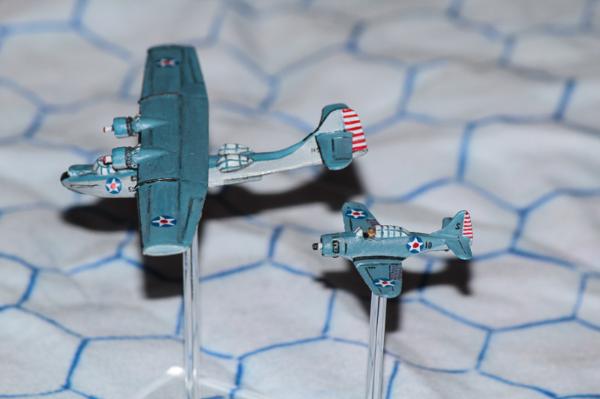
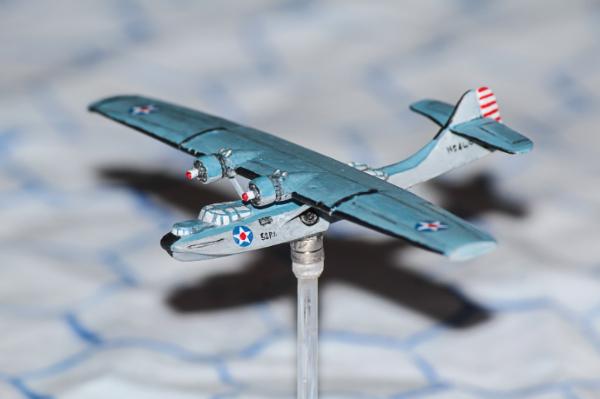
the absolutely beautiful Consolidated PBY Catalina flying boat. These were the most versatile and widely used flying boat of the war and continued to see service long after in some armed forces as late on as the 1980s!!! Some modern day fire fighting services still use them as water bombers!
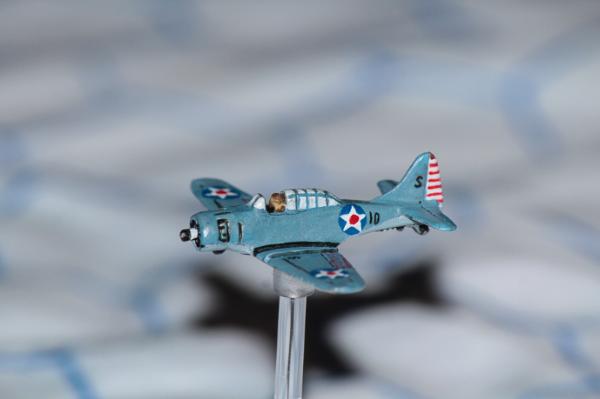
This is the Douglas SBD Dauntless of pilot Stanley "Swede" Vejtasa who once, when attacked by three A6M2 Zero fighters shot two of them down and cut off the wing of the third in a head-on pass with his wingtip. Proper aviation badassery that.
Next up its a few more painted planes, that is planes based on ones that were painted in American factories. The USAAF was using this kind of olive drab officially but some factories just stopped painting them altogether cutting down on production times.
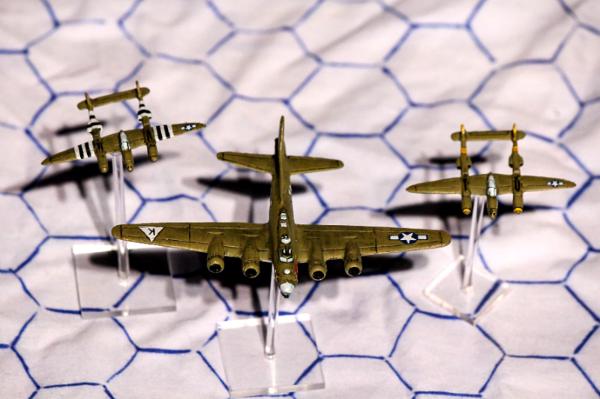
These are the mean greens.
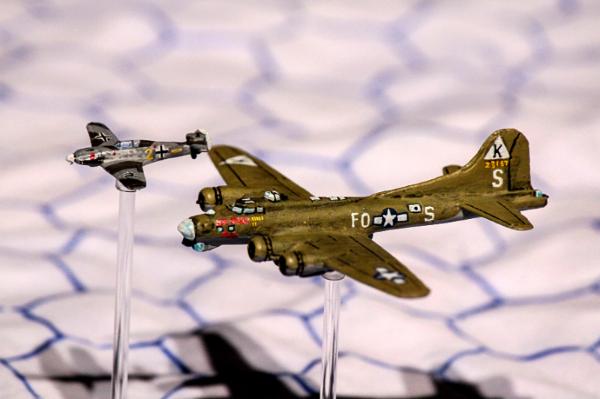
This is of course "Ye Olde Pub" the B-17 of USAAF pilot Charlie Brown (yes really) whose plane got shot to absolute shreds on a bombing run over Bremen. A Luftwaffe fighter, Franz Stigler took off to investigate and found it to be the most damaged plane he'd ever seen still flying. He chose not to attack the B-17 but attempted to convince Brown to land and save his wounded crew. Brown did not wish to be captured in Germany or make for nearby neutral Sweden and kept flying for England. Stigler escorted the B-17 to the coast before returning home. Both pilots met 40 years later and were friends until Stigler's death in 2008.
You can read lots more on <a href="
https://en.m.wikipedia.org/wiki/Charlie_Brown_and_Franz_Stigler_incident" target="_new" rel="nofollow"> The Charlie Brown and Franz Stigler incident here.</a>
Next up its one of my absolute all time favourite planes the Lockheed P-38 Lightning aka "the fork-tailed devil"
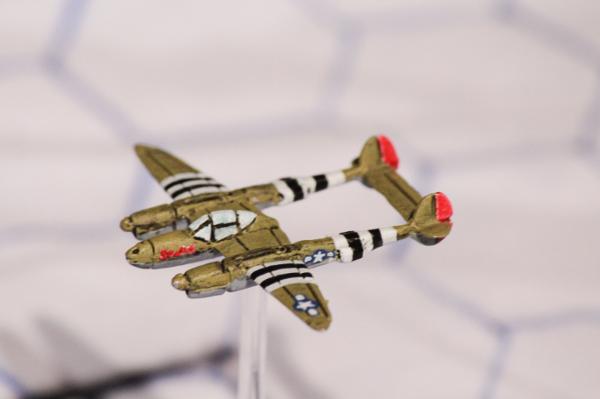
This is "Scat II" the P-38 flown by a young Captain Robin Olds. In the 479th fighter group over occupied France in preparation for the invasion of Normandy. Olds went on to fly P-51 Mustangs over Germany finishing his wartime service with a plethora of medals and awards. His <a href="
https://en.m.wikipedia.org/wiki/Robin_Olds" target="_new" rel="nofollow">long and distinguished airforce career </a> continued until his retirement in 1973 as Brigadier General.
Thanks man. Glad to be back at it.
Sticking with the P-38 for now (because look at these things!) but this time I've done a couple in bare metal silver schemes.
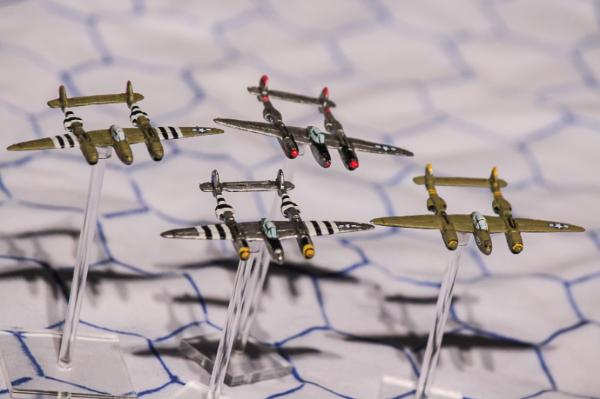
No more famous flyers (that I know of) this time. Just a couple of examples of the kind of style I was seeing. Note the black anti-glare panels painted in front of the cockpits and on the sides of the engines facing the pilot. These were often done in black or the standard USAAF green.
This sleek looking light bomber is a Douglas A-26 Invader.
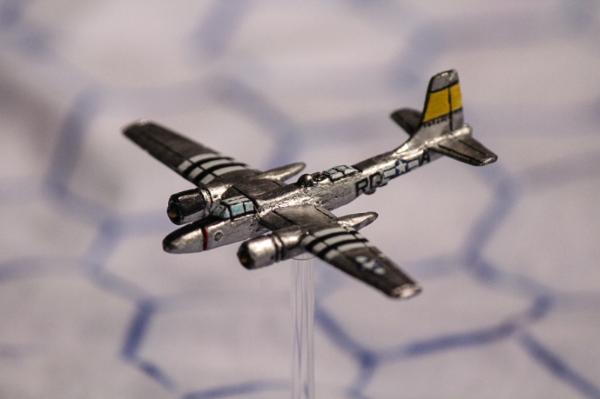
Another shiny silver scheme with invasion stripes. (It is an 'Invader' afterall) Though their deployment was delayed due to terrible visibility from the cockpit needing to be rectified, so they didn't see service in Europe until September 44 missing the D-day invasion by a few months. Still there's every likelihood a new Allied plane in Sep 44 would've warranted identification stripes until they were all done away with by the end of the year.
These machines were fast and lethal ground attack and low level bombing aircraft and packed an absolute metric butt-load of weaponry compared to anything else of their type. They remained in service after WW2 on through the Korean War and into Vietnam finally retiring in 1969.
And while we're on the topic of Invasion Stripes.
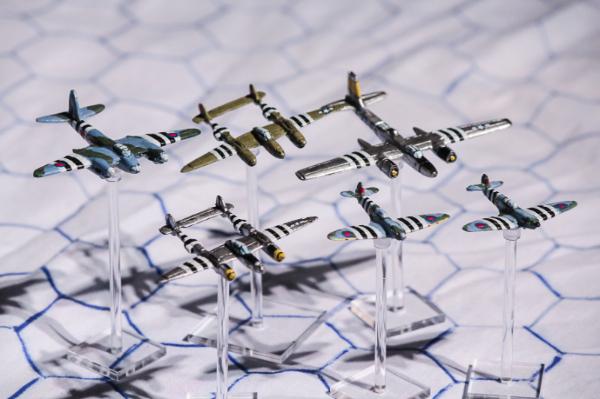
These are all my invasion striped aircraft so far. Given the wide variety of paint schemes from the various allied airforces involved in the invasion of Normandy you can see the need for this kind of identification marking.
Next up I've taken us back to both sides of 1942 with a pair of Brewster Buffalos.
The attack on Pearl Harbour gave the Top Brass of the USAAF a lot of thinking to do, and among the many changes to be made was a new paint scheme. Gone were the yellow wings of the 1930s and in January 1942 the National Insignia roundels were added to both upper and lower wing positions.
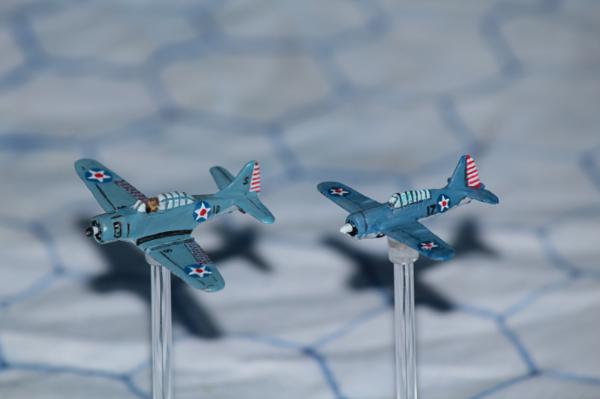
This picture shows both a Brewster F2A Buffalo and a larger Douglas Dauntless in early 1942 colours.
Then in May 1942 the roundel was revised to remove the red portion to better distinguish it from the Japanese Hinomaru, and the tail stripes were dropped too leaving just the plain blue and white insignia in six positions. Buffalos that flew in the Battle of Midway would have been painted like this.

The Brewster F2A Buffalo was over-weight underpowered and unstable and the Japanese fighters it was up against could fly rings around it. By 1942 the much derided "Flying Coffin" was largely considered an obsolete 2nd line aircraft better suited to training duties than front line fighting. That said the Finnish Air Force made a great success of their Buffalo squadrons producing 36 Buffalo Aces.
I've also done an earlier model B-17 in an early 1942 scheme.
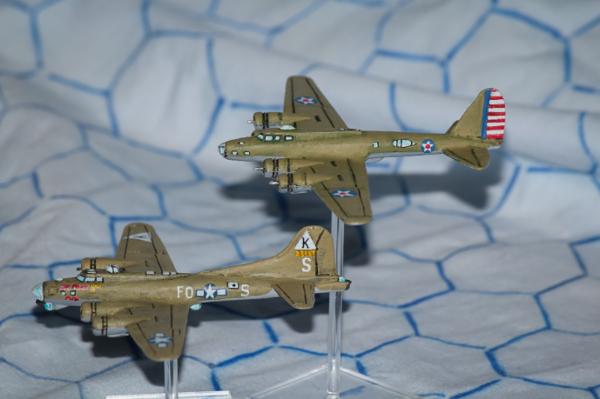
The B-17 D and E were two distinctly different aircraft. Following front line deployment by both the RAF and USAAF the new B-17E got a redesigned tail with a larger vertical stabiliser, a dorsal gun turret, a tail gunner position and the ventral 'bathtub' gunner's position was replaced with a bubble turret.
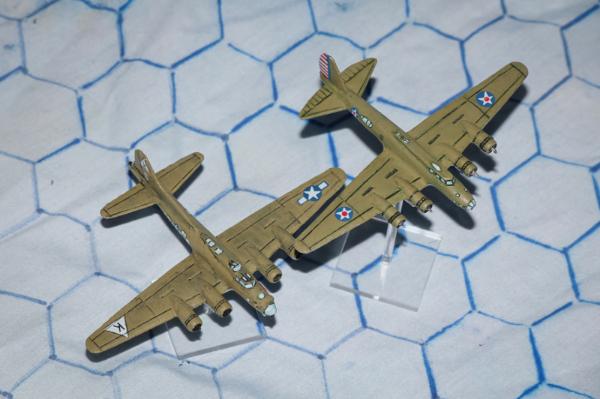
Thunder! Thunder! Thunderbolts! Ho!
Yes folks, the mighty Republic P-47 Thunderbolt fighter bomber. These are some older Razorback models introduced in November 1942.
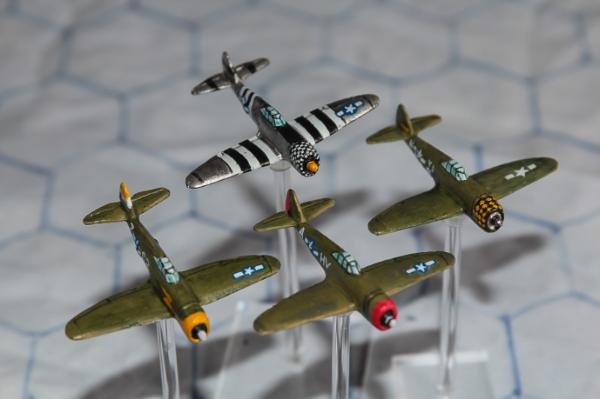
The mighty "Jug" (Juggernaut) was among the heaviest single engine fighters of the war. It was a big bruiser of a fighter that could give as as good as it got and it became the real workhorse of the USAAF.
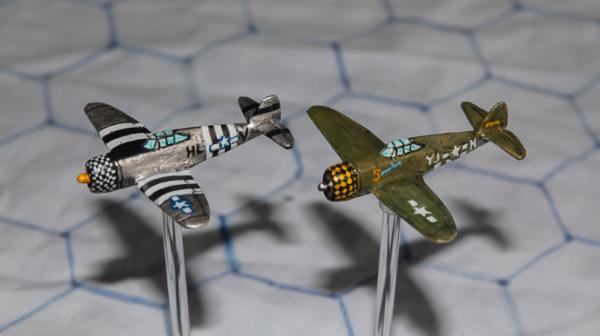
They weren't good climbers but man could they dive. German fighter pilots soon learned that you couldn't dive out of a fight with a Thunderbolt like you could from a Spitfire but they had no trouble climbing up and over them. A new propellor helped solve that problem.
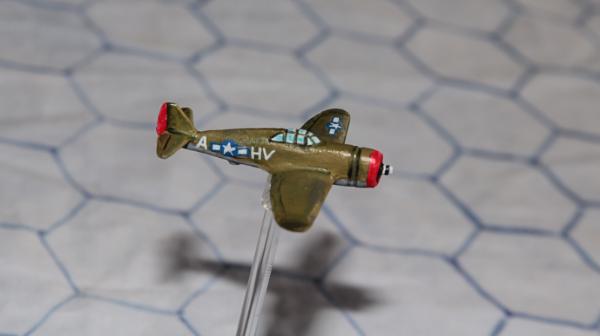
This Thunderbolt was one flown by Francis Stanley "Gabby" Gabreski, the highest scoring Thunderbolt Ace of the war. Gabreski flew 166 combat sorties and was officially credited by the USAAF with 28 aircraft destroyed in air combat and 3 on the ground. He was captured in July 1944 and remained a POW in Germany until he was liberated by Soviet forces in April 1945. He would go on to become a Korean War jet ace and eventually retired from service in the USAF as a Colonel in November 1967.
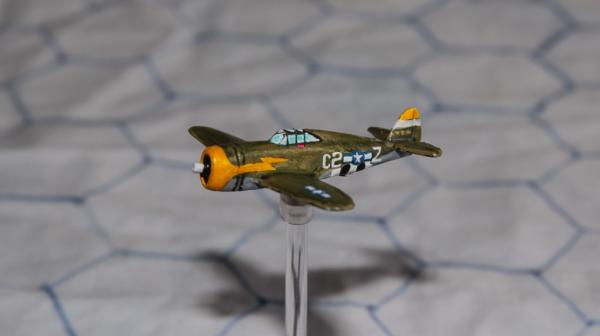
This is "Margie II" flown by Gerald Grace who Flew 96 missions with the 396th Fighter Group. Once shot down by ground flak near Soissons, France, Aug. 31,1944 in German held territory, he evaded capture and managed to make his return to base exactly 24 hours after being shot down, setting a new record for passing through Paris. His plane was named after Marjorie, his sweetheart back home, whom he married in 1945. They had nine kids together.
The beautiful, fast and deadly North American Aviation P-51 Mustang.
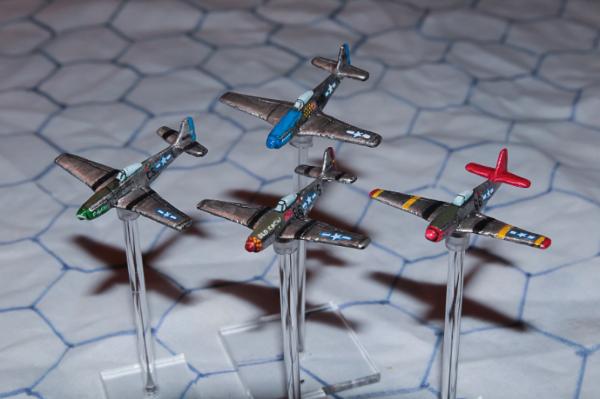
Often considered the finest piston driven single engine fighter ever produced. After an engine swap and the addition of greater fuel capacity the P-51 fulfilled a vital role as a long range, high altitude bomber escort.
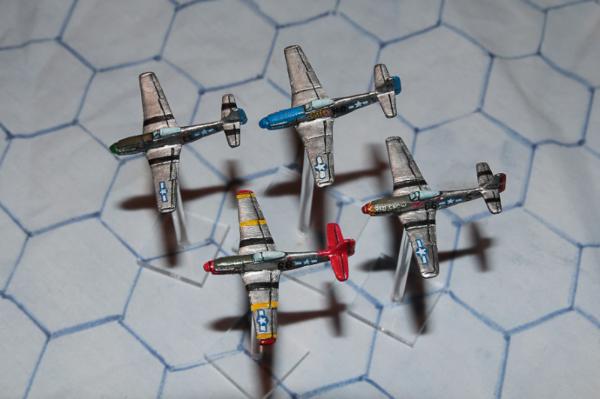
I had to paint at least one of my P-51s as one of the Red Tails of the 332nd fighter group. I remember watching the old Tuskegee Airmen movie (the one with Laurence Fishburne) as a kid and finding it a really compelling story. Still haven't seen the new one (though I've read mixed reviews).

Benjamin O. Davis Jr. Led the 99th Pursuit squadron of the "Red Tails" flying sixty missions in P-39, Curtiss P-40, P-47 Thunderbolts and P-51 Mustang fighters. His life and career has been celebrated with countless public recognitions of his achievements in overcoming adversity and signalling an ongoing change for racial equality. He died a Four Star General in 2002.
Clarence E "Bud" Anderson -"Old Crow" - a triple ace promoted to Major by age 22. Often considered one of the finest pilots in the force he went on be a test pilot for the airforce. At the grand old age of 95 he still retains his pilots license and gives lectures on experience.
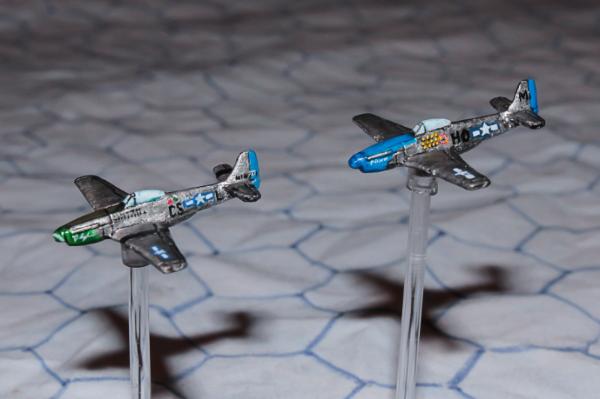
These are the aircraft of Ray S Wetmore - "Daddy's girl" (green nose) And John C Meyer- "Petie 2nd" (blue nose)
Both men were high scoring P-51 aces in WW2 who went on to fly the F-86 Sabre jet fighter after the war.
Major Wetmore was a quadruple ace during WW2 and the youngest Major at 21 on VE Day. Major Wetmore was killed in a freak accident when his F-86 crashed in Feb 1951.
Meyer went on to become a jet ace in the Korean war. He retired in 1974, as commander-in-chief of the Strategic Air Command.
Another plane often hailed as one of the best fighter aircraft of the USAAF is the Vought F-4U Corsair. Seen here in tricolour night camouflage with a radar dome mounted on the starboard wing.
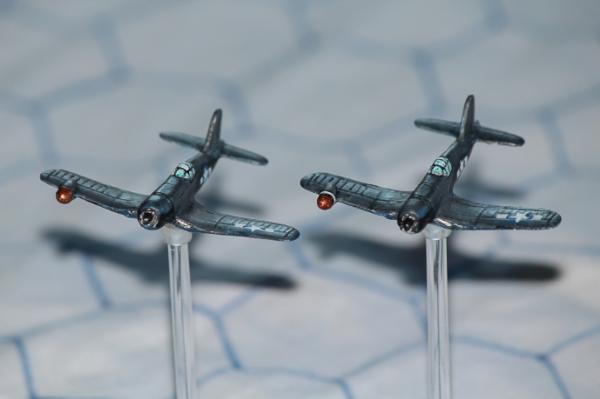
The US Navy had mixed success with the F4U which had difficulty with carrier landings. Following the introduction of the Grumman Hellcat the Navy used some of its Corsairs as radar equipped night fighters.
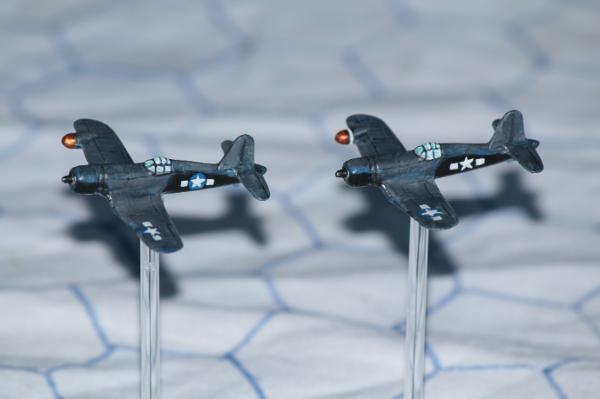
And lastly for now it's probably the most significant and controversial aircraft of the entire war. The Boeing B-29 Superfortress Enola Gay. Which of course dropped the first atomic bomb, "Little Boy" targeted on Hiroshima.
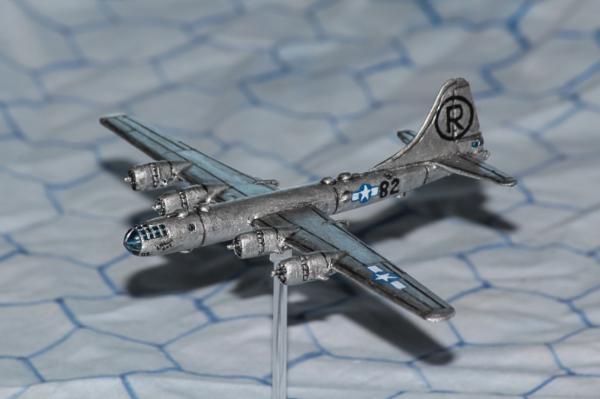
The Boeing B-29 Superfortress was the product of one of the biggest, most expensive, most state of the art research and development projects of the USAAF at the time. Introduced in May 1944 it was a high altitude strategic bomber capable of flight at altitudes up to 31,850 feet (9,710 m) at speeds of up to 350 mph. Higher and faster than most Japanese fighters were capable of.
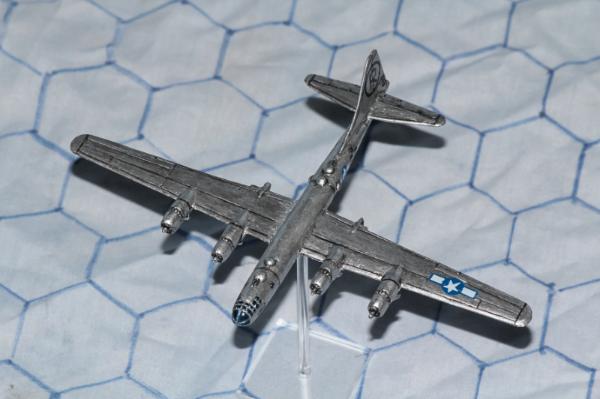
In the 1980's debate persisted about the correct historical context for the display Enola Gay, and a 50th anniversary exhibit in 1995 sparked controversy. It has now been fully restored and on display since 2003.

Size-wise its the largest aircraft in my collection so far. This is a comparison against my three other allied four-engine heavy bombers and the largest German bomber in my collection the He111. Looking at these bombers in comparison you can see about a decade worth of development in bomber design and modernisation unfolding.